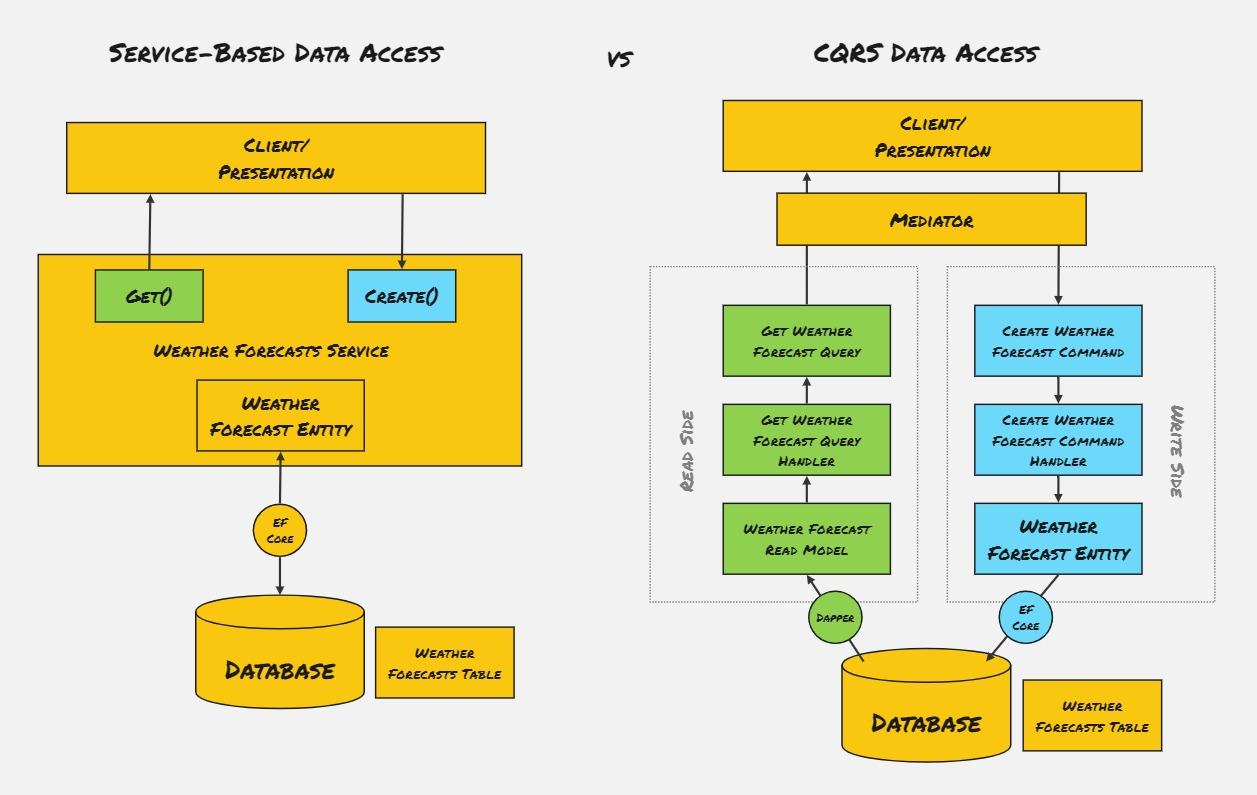Understanding CQRS: Simplifying Your Code by Splitting Responsibilities
 Ujjwal Singh
Ujjwal Singh
When building complex systems, managing the codebase can become challenging as your application grows. One common issue developers face is the blurring of responsibilities within classes, where both reading and modifying data are handled together. This can lead to code that's hard to maintain, scale, or even understand. That's where CQRS (Command Query Responsibility Segregation) comes into play.
What is CQRS?
CQRS stands for Command Query Responsibility Segregation. At its core, it's a design pattern that advocates for the separation of commands (operations that change the state of your system) and queries (operations that read the state of your system). By keeping these responsibilities separate, CQRS helps in managing complexity within your application.
The Goal of CQRS
The primary goal of CQRS is to prevent your classes from becoming overly complicated. By splitting the responsibilities of commands and queries, you create a more maintainable and scalable codebase. In simpler terms, CQRS allows you to clearly define what your classes are responsible for:
Commands: Handle actions that change the state of your system, such as creating a new user, placing an order, or updating an inventory.
Queries: Handle actions that retrieve data without changing the state, such as fetching user details, retrieving order history, or checking stock levels.
Why Split Responsibilities?
When you combine both reading and writing operations in the same classes, things can quickly become tangled. For example, a method that handles user registration might also be responsible for fetching user data for validation. This can lead to a class that's doing too much, making it harder to test, maintain, and evolve.
By splitting these responsibilities:
Clarity: Your code becomes more understandable. A class that handles commands is only responsible for modifying data, while a class that handles queries is solely focused on retrieving data.
Maintainability: With separate classes, you can evolve each side independently. Need to add complex validation logic to a command? No problem. Want to optimize how data is retrieved in a query? Go ahead—your command logic remains untouched.
Scalability: As your application grows, the ability to scale read and write operations separately becomes crucial. CQRS naturally supports this by allowing you to optimize each side independently.
Scaling with CQRS
One of the powerful aspects of CQRS is its ability to improve scalability. In a typical monolithic design, read and write operations are often intertwined, making it difficult to optimize or scale them independently. CQRS allows you to separate these concerns, enabling you to:
Optimize Read Models: You can tailor your query operations to be as efficient as possible without worrying about how it affects write operations. This might include caching strategies, denormalized views, or even separate databases optimized for read performance.
Optimize Write Models: Commands can be optimized for transactional integrity and business rules, ensuring that your system's state remains consistent and reliable.
By scaling reads and writes separately, CQRS can help you handle higher loads more efficiently, especially in distributed or microservices architectures.
When to Use CQRS?
While CQRS offers many benefits, it's essential to recognize that it's not a silver bullet. CQRS is particularly useful in complex domains where you need clear separation of concerns, such as in event-driven systems or microservices architectures. However, for simple CRUD (Create, Read, Update, Delete) applications, CQRS might introduce unnecessary complexity.
Consider using CQRS if:
You're dealing with a complex domain where business logic is tightly coupled with data changes.
You need to scale read and write operations independently.
Your application has distinct read and write workloads, each with different performance requirements.
Conclusion
CQRS is a powerful pattern that can simplify your code by splitting responsibilities between commands and queries. By doing so, you create a more maintainable, scalable, and understandable codebase. However, like any pattern, it should be used judiciously and where it adds value.
In the right context, CQRS can be a game-changer, making your application easier to manage as it grows in complexity. Whether you're working on a monolithic application or a distributed system, CQRS can help you keep your classes focused and your codebase clean.
Happy coding! If you found this article helpful, consider sharing it with your fellow developers or leaving a comment below.
Subscribe to my newsletter
Read articles from Ujjwal Singh directly inside your inbox. Subscribe to the newsletter, and don't miss out.
Written by

Ujjwal Singh
Ujjwal Singh
👋 Hi, I'm Ujjwal Singh! I'm a software engineer and team lead with 10 years of expertise in .NET technologies. Over the years, I've built a solid foundation in crafting robust solutions and leading teams. While my core strength lies in .NET, I'm also deeply interested in DevOps and eager to explore how it can enhance software delivery. I’m passionate about continuous learning, sharing knowledge, and connecting with others who love technology. Let’s build and innovate together!